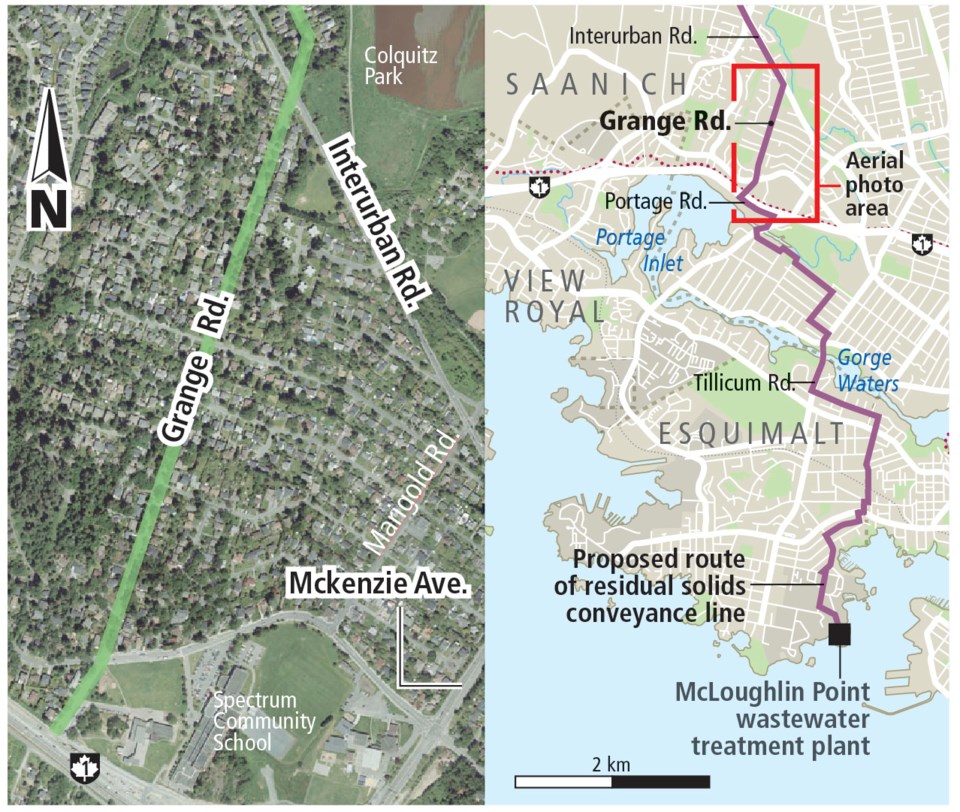Dissent from residents in the Grange Road area of Saanich over the prospect of losing 49 trees to make way for a sewage pipe has sewage-project officials looking at an alternative.
The 19.3-kilometre residual-solids line will connect the McLoughlin Point regional sewage-treatment plant to the Hartland landfill.
The plan calls for removal of 29 trees on one side of Grange “with severe impacts and possible removal of another 20,” said area resident Simon McVaugh-Smock.
Robin Duncan, who has lived in the neighbourhood for almost 40 years, said the trees form a unique archway over the street. She said the majority of the trees in jeopardy are Garry oak and some are Douglas fir.
The situation has galvanized people living nearby, Duncan said.
She said one suggestion being made is to look at Marigold Road as an alternate route since it wouldn’t involve tree removal.
“We don’t care that the sewer is going up Grange,” Duncan said. “We care that they’re going to devastate the streetscape.
“The first night that I was aware of it I just had this feeling of loss.”
Community concerns has the Capital Regional District considering using the other side of Grange, said Elizabeth Scott, deputy project director for the CRD’s $765-million sewage-treatment venture. Trees would be saved by the change, but it would involve blasting and have more of an overall impact, Scott said.
“We’re looking at how we can reduce the impact to trees staying within Grange Road,” she said.
Scott said the initial plan has been based on lessening the impact to neighbours by using an existing trench dug for a water main that is no longer in use.
“What we’ve heard from residents, both at the open houses that we had last week and also through our email address, is that they’d really very much like us to minimize impacts to trees, so we’re looking at can we go down a different alignment.
“We’re trying to balance the impact form blasting, impact to trees.”
The greater impact that would result from using the other side of Grange isn’t an issue for McVaugh-Smock.
“I would gladly put up with the impacts it would have on our local ability to get around and the blasting and the general disruption of having it done on that side of our street,” he said. “That would save the trees.”
McVaugh-Smock said the situation has been hard on people.
“The main thing is the trees, of course,” he said. “We’re really dead-set that we don’t want to lose that character that it brings to our neighbourhood, and that it brings to our city.”
He said they are “beautiful, gorgeous, old-growth trees.”
Not enough was done to inform people about what was being considered, McVaugh-Smock said.
Duncan was the one who spread the word using the emails she had as the local Block Watch captain. “It’s really interesting and exciting to see how quickly and how passionately people responded,” she said.
Duncan said there’s no going back once trees are taken down, even if new ones are planted. “Once it’s gone, it’s gone.”



